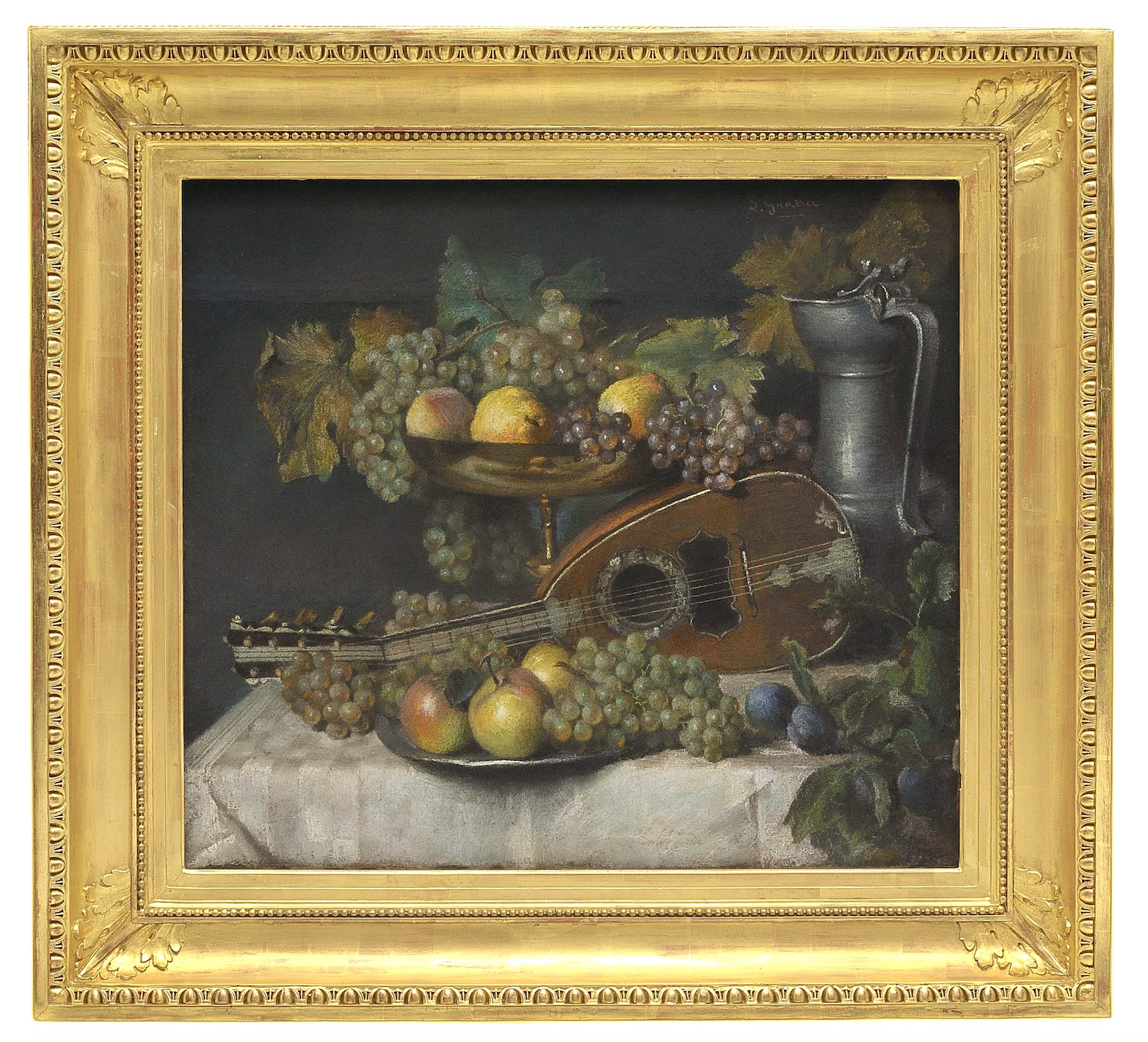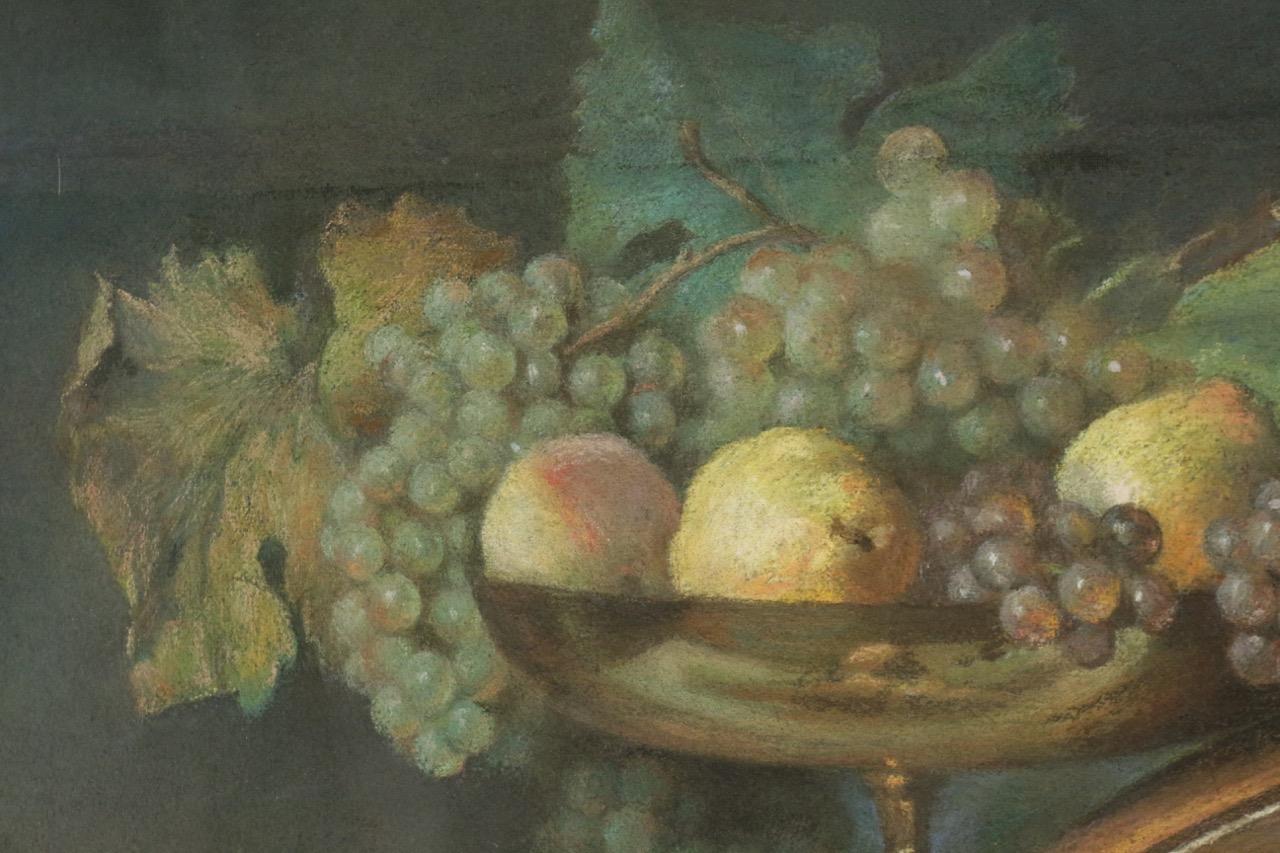Charles Louis Gratia
Still life with mandolin , dated 1852
Pastel on canvas
Signed and dated upper right
Dimensions: 61 x 70cm
With frame 87 x 95 cm
Price: 7000 €
“A very valiant artist, Charles-Louis Gratia, of the School of Nancy, had in his male talent preserved intact the tradition of Peronneau and Latour in works among which a large number of portraits of dramatic artists appeared at the Salons of 1837 to 1870 and whose most authoritative art critics of that time have left us the greatest praise. », Jany-Robert, “The Pastel”, 1908.
French painter and pastellist of the French school, Charles Louis Gratia is the author of a treatise on pastel. He describes how he makes his pastels, and insists on the need for each artist to make them himself in order to obtain delicate colors and a lasting texture. It informs the manufacturing process; certain very rare and expensive powders and pigments come from the stamens of flowers or the wings of tropical butterflies. His concern for manufacturing makes all the difference: a century later, his paintings still bear witness to the same freshness.
Charles-Louis Gratia gives us a complex and precise nature. He works his composition and organizes the objects with skill for the pleasure of the spectator. Here, the still life is as luxurious as it is modest. It abounds with fresh grapes, whose grains bursting with sugar have the skin stretched to capture a hint of light.
They elegantly frame the mandolin, whose presence lends conceptual momentum to the composition. The musical instrument is reflected in the cup, whose slender foot supports a bunch of grapes. The image is distorted by the curvature of the cup. The rustic pitcher contrasts with the elegant mandoline. The tablecloth, embroidered with golden threads, gives light and sits the composition with refinement in the lower part of the painting.
The painter trained with Henri Decaisne. A fine pastellist, he exhibited at the Paris Salon from 1837 to 1882. He mainly represents the beautiful world of Paris, from Frédéric Chopin to George Sand (1866), some studies of anatomy and elegant still lifes. Throughout his career, the painter has no rival; he excels alone at the top of his game.
A member of the Society of French Artists, he frequented the poets Victor Hugo and Alphonse de Lamartine, the painter Ernest Meissonnier and the actor Frédérick Lemaître. Following the political upheavals of the July Monarchy, the painter left for London in 1850 with his wife and two daughters. His sons, one a brilliant composer and the other an actor, live in Paris.
In London, his beginnings are difficult, although he imposes himself by the art of pastel. The English consecrated his art when he painted the portrait of the first Queen’s Chamberlain, Lord Willoughby, and later that of Queen Victoria herself. In order not to arouse the jealousy of the official court painter, Franz Xaver Winterhalter, the portrait is not exhibited and the title of the illustrious model is not disclosed. Back in Paris, “La liseuse”, a portrait of his late daughter, was bought by the State and was exhibited in the galleries of the Champs Elysées in Paris. Shortly after, the Nancy Museum of Fine Arts acquired one of his wife’s portraits.
Museums:
• Nancy, Nottingham.
Bibliography:
• Charles-Louis Gratia, “Traité de la peinture au Pastel”, Nancy, Failly: Association des artistes lorraines (founded by Charles-Louis Gratia in 1892), first edition 1891, reissue 2014. To read on: http://www.pastel-noun.com/pages/traite-de-pastel-charles-louis-gratia.html
• Louis Dussieux, “French artists abroad, third edition”, Paris, Librairie Jacques Lecoffrre et Cie, p. 297
• Jany-Robert, “Le Pastel”, Paris, Fine Arts Printing, 1908, p. 11-12 and p. 24





